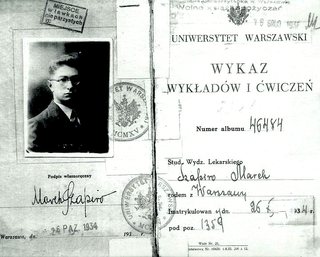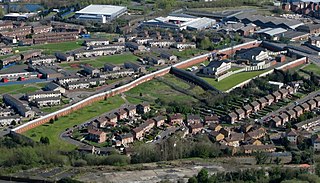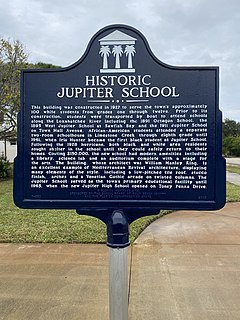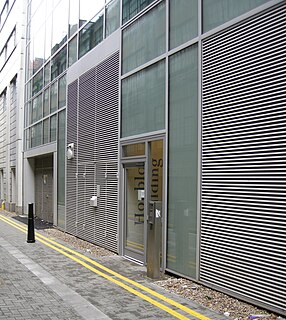 W
WAuto-segregation or self-segregation is the separation of a religious or ethnic group from the rest of society in a state by the group itself. This could also mean inability for a normal social interaction and a form of social exclusion.
 W
WGhetto benches was a form of official segregation in the seating of university students, introduced in 1935 at the Lwow Polytechnic. Rectors at other higher education institutions in the Second Polish Republic had adopted this form of segregation when the practice became conditionally legalized by 1937. Under the ghetto ławkowe system, Jewish university students were required under threat of expulsion to sit in a left-hand side section of the lecture halls reserved exclusively for them. This official policy of enforced segregation was often accompanied by acts of violence directed against Jewish students by members of the ONR and other extreme right and anti-Semitic organizations like the National Democracy movement.
 W
WClyde Roark Hoey was an American Democratic politician from North Carolina. He served in both houses of the state legislature and served briefly in the U.S. House of Representatives from 1919 to 1921. He was North Carolina's governor from 1937 to 1941. He entered the U.S. Senate in 1945 and served there until his death in 1954, only days before the Brown v. Board of Education decision. He was a segregationist.
 W
WHousing segregation in the United States is the practice of denying African Americans and other minority groups equal access to housing through the process of misinformation, denial of realty and financing services, and racial steering. Housing policy in the United States has influenced housing segregation trends throughout history. Key legislation include the National Housing Act of 1934, the G.I. Bill, and the Fair Housing Act. Factors such as socioeconomic status, spatial assimilation, and immigration contribute to perpetuating housing segregation. The effects of housing segregation include relocation, unequal living standards, and poverty. However, there have been initiatives to combat housing segregation, such as the Section 8 housing program.
 W
WHouston's first sit-in was held Friday, March 4, 1960 at the Weingarten's grocery store lunch counter located at 4110 Almeda Road in Houston, Texas. This sit-in was a nonviolent, direct action protest led by more than a dozen Texas Southern University students. The sit-in was organized to protest Houston's legal segregation laws. The students met on Texas Southern University's campus and the YMCA located on Wheeler Street to organize the sit-in. They called their meetings 'war room' sessions. In these sessions, the students strategized like a military unit on how they would dismantle Houston's disenfranchisement laws. They believed that their peaceful approach was a tactic that would break Houston's discriminatory practices. It worked. The students called themselves the Progressive Youth Association (PYA). PYA was formed to address the social, political and economic issues that African-Americans faced in Houston. The Houston collegians were inspired by students at North Carolina Agricultural and Technical State University, who held a sit-in in Greensboro, North Carolina on February 1, 1960.
 W
WInclusion in education refers to a model wherein students with special needs spend most or all of their time with non-special needs students. It arise in the context of special education with an individualized education program or 504 plan, and is built on the notion that it is more effective for students with special needs to have said mixed experience for them to be more successful in social interactions leading to further success in life. Inclusion rejects but still provides the use of special schools or classrooms to separate students with disabilities from students without disabilities. Schools with inclusive classrooms do not believe in separate classrooms. They do not have their own separate world so they have to learn how to operate with students while being less focused on by teachers due to a higher student to teacher ratio.
 W
WMainstreaming, in the context of education, is the practice of placing students with special education services in a general education classroom during specific time periods based on their skills. To clarify, this means students who are a part of the special education classroom will join the regular education classroom at certain times which are fitting for the special education student. These students may attend art or physical education in the regular education classrooms. Sometimes these students will attend math and science in a separate classroom, but attend English in a general education classroom. Schools that practice mainstreaming believe that students with special needs who cannot function in a general education classroom to a certain extent belong in the special education environment.
 W
WThe North Greenwood Library is a public library that is part of the Clearwater Library System which, in turn, is part of the Pinellas Public Library Cooperative. Located at 905 N Martin Luther King Jr. Ave, its current Branch Manager is Christa Smith.
 W
WSegregation in Northern Ireland is a long-running issue in the political and social history of Northern Ireland. The segregation involves Northern Ireland's two main voting blocs—Irish nationalist/republicans and unionist/loyalist. It is often seen as both a cause and effect of the "Troubles".
 W
WThe slogan Nur für Deutsche was a German ethnocentric slogan indicating that certain establishments, transportation and other facilities such as park benches, bars and restaurants were reserved exclusively for Germans. It was used during the World War II in many German-occupied countries, especially Poland from 1939 onwards. Signs bearing the slogan were posted at entrances to parks, cafes, cinemas, theaters and other facilities. They were normally the best such facilities to show the indigenous population the alleged "superiority" of the Germans.
 W
WOld Jupiter School is a historic landmark located in Jupiter, Florida. The school was constructed in 1927 to serve approximately 100 white-only students and served as the area's primary school until 1965.
 W
WParable of the Polygons is a 2014 explorable explanation created by Vi Hart and Nicky Case. The article focuses on a society of blue squares and yellow triangles which have slight personal biases against diversity, which leads to social segregation. It is based on game theorist Thomas Schelling's papers about residential segregation. The article was well-received, especially its visual and playable aspects, and was called a useful educational tool for topics like racial segregation.
 W
WA "poor door" is a separate entrance in a multi-unit housing development for those living in less expensive apartments.
 W
WRacial separate schools existed in some provinces of Canada from the mid-19th century to the mid-20th century. They were established by statute and did not have constitutional status.
 W
WReligious segregation is the separation of people according to their religion. The term has been applied to cases of religious-based segregation which occurs as a social phenomenon, as well as segregation which arises from laws, whether they are explicit or implicit.
 W
WSeparate but equal was a legal doctrine in United States constitutional law, according to which racial segregation did not necessarily violate the Fourteenth Amendment to the United States Constitution, which nominally guaranteed "equal protection" under the law to all people. Under the doctrine, as long as the facilities provided to each "race" were equal, state and local governments could require that services, facilities, public accommodations, housing, medical care, education, employment, and transportation be segregated by "race", which was already the case throughout the states of the former Confederacy. The phrase was derived from a Louisiana law of 1890, although the law actually used the phrase "equal but separate".
 W
WSocial exclusion or social marginalisation is the social disadvantage and relegation to the fringe of society. It is a term that has been used widely in Europe and was first used in France in the late 20th century. It is used across disciplines including education, sociology, psychology, politics and economics.
 W
WThe two-nation theory is an ideology of religious nationalism which significantly influenced the Indian subcontinent following its independence from the British Empire. According to this theory, Muslims and Hindus are two separate nations, with their own customs, religion, and traditions; therefore, from social and moral points of view, Muslims should be able to have their own separate homeland outside of Hindu-majority India, in which Islam is the dominant religion, and be segregated from Hindus and other non-Muslims. The two-nation theory advocated by the All India Muslim League is the founding principle of the Pakistan Movement through the partition of India in 1947.